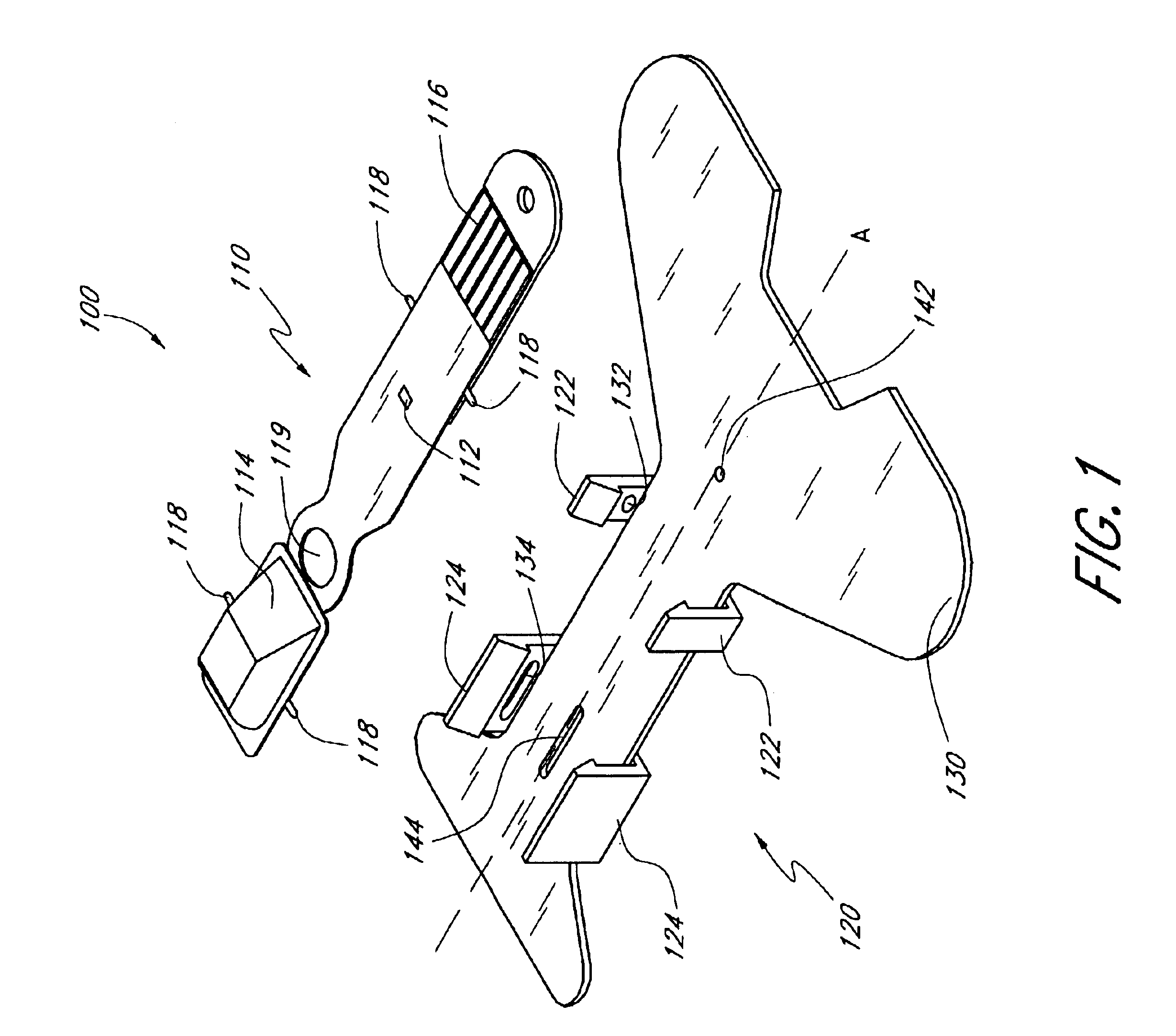Optical sensor including disposable and reusable elements
a technology of optical sensors and reusable elements, applied in the field of optical sensors, can solve the problems of stretching and damage to the electrical components of flexible circuits, and the limited number of sizes and shape configurations of sensors, and achieve the effect of reducing the damage of reusable elements and reducing the for
- Summary
- Abstract
- Description
- Claims
- Application Information
AI Technical Summary
Benefits of technology
Problems solved by technology
Method used
Image
Examples
Embodiment Construction
[0028]FIG. 1 illustrates an embodiment of a sensor 100. The sensor 100 includes a reusable element 110 and a disposable element 120. According to one embodiment, the reusable element 110 generally includes those components of the sensor 100 that are more expensive, such as, for example, one or more energy emitters, one or more energy detectors, one or more breakable conductors, one or more information elements, some or all of the same, or the like. In addition, the reusable element 110 includes an assembly mechanism generally shaped to mate with a corresponding component of the disposable element 120, as will be disclosed in greater detail below.
[0029]The disposable element 120 generally includes those components of the sensor 100 that are less expensive, such as, for example, face tape, bandages, or other mechanisms for removably attaching the reusable element 110 to a measurement site. Moreover, the disposable element 120 includes a mating assembly mechanism generally shaped to ma...
PUM
 Login to View More
Login to View More Abstract
Description
Claims
Application Information
 Login to View More
Login to View More - R&D
- Intellectual Property
- Life Sciences
- Materials
- Tech Scout
- Unparalleled Data Quality
- Higher Quality Content
- 60% Fewer Hallucinations
Browse by: Latest US Patents, China's latest patents, Technical Efficacy Thesaurus, Application Domain, Technology Topic, Popular Technical Reports.
© 2025 PatSnap. All rights reserved.Legal|Privacy policy|Modern Slavery Act Transparency Statement|Sitemap|About US| Contact US: help@patsnap.com



